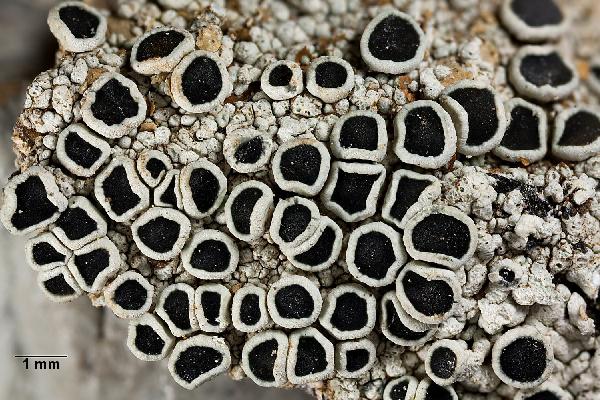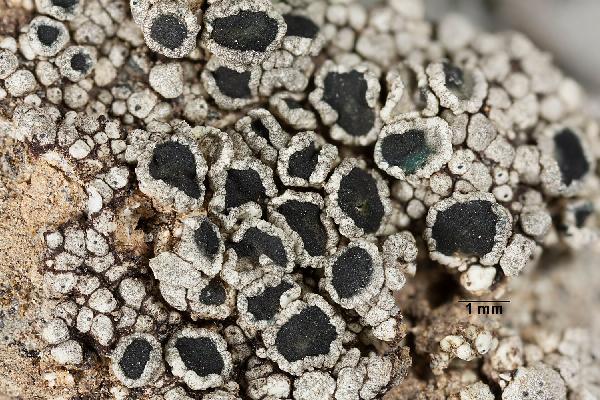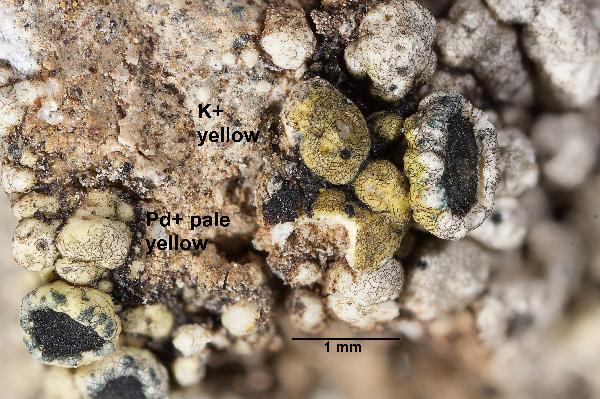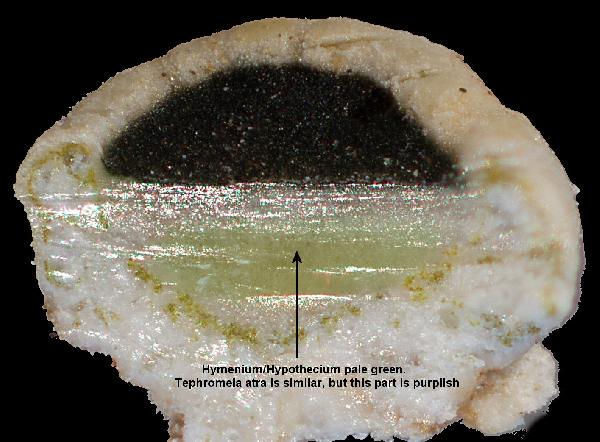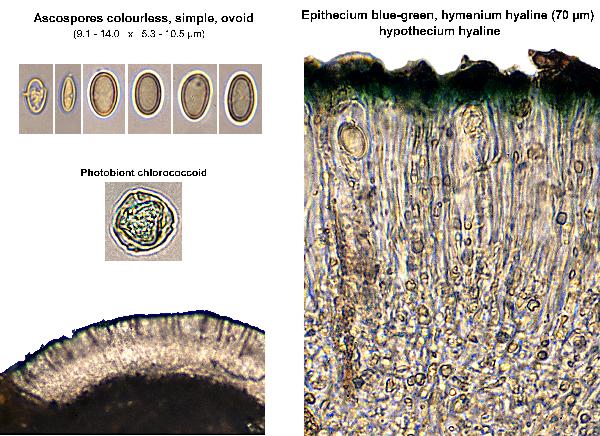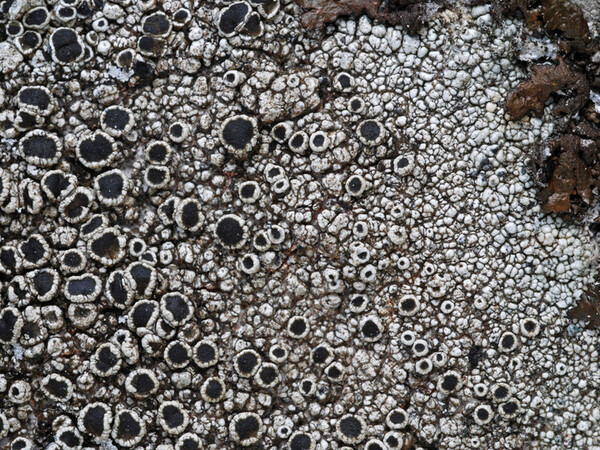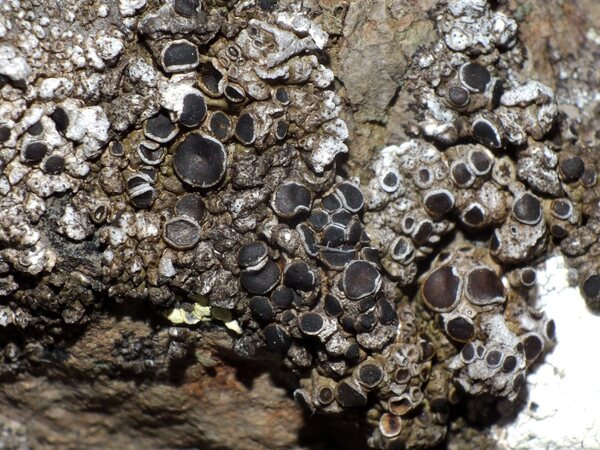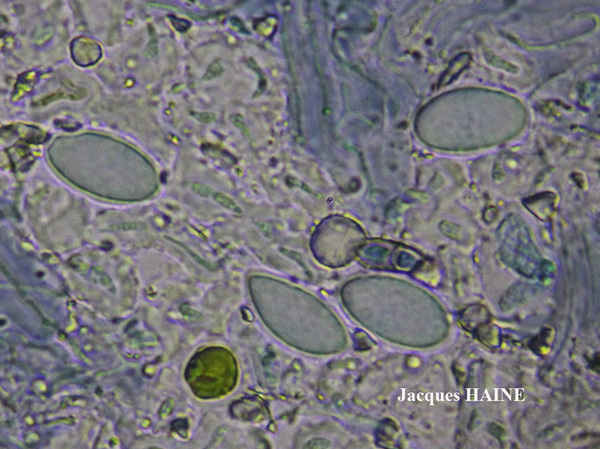Lecanora gangaleoides Nyl.
Flora, 55: 354, 1872.
Synonyms: Lecanora argopholis var. ocellulata (Arnold) Jatta; Lecanora cenisia var. gangaleoides (Nyl.) Harm.
Distribution: N - Ven, Lig (Brunialti & al. 1999, Watson 2014). C - Tosc, Umb (Panfili 2000b, Ravera & al. 2006), Laz (Roccardi 2003, Genovesi & al. 2011), Abr (De Angelis & al. 2003), Sar (Nöske 2000, Rizzi & al. 2011, Giordani & al. 2013, Neuwirth 2018, Brackel & Berger 2019). S - Camp (Garofalo & al. 1999, Aprile & al. 2002, Catalano & al. 2016), Cal (Puntillo 1996), Si (Ottonello & Romano 1997, Grillo 1998, Grillo & Caniglia 2004, Ottonello & al. 2011).
Description: Thallus crustose, episubstratic, rimose-areolate to verrucose-areolate, white to whitish grey, often with a yellowish hue, ecorticate, sometimes delimited by a thin, pale prothallus. Lower part of medulla, especially below the apothecia, most often orange. Apothecia lecanorine, sessile, slightly constricted at base, 0.5-1.5(-2) mm across, with a black, flat to convex, epruinose disc and a persistent, entire or rarely flexuose, smooth thalline margin. Thalline exciple corticate, the medulla with large crystals insoluble in K; proper exciple colourless, with crystals soluble in K; epithecium greenish brown to greenish black, K+ green, N+ violet-purple, without crystals; hymenium pale olive-green, 70-100 µm high, not inspersed with oil droplets; paraphyses 1-1.5 µm thick at mid-level, not or only slightly thickened at apex, the apical cells to 2.5 µm wide; hypothecium colourless to very pale brown, not inspersed. Asci 8-spored, clavate, very thin-walled, with a K/I+ blue, tall tholus penetrated by a faintly amyloid apical cushion, the wall K/I-, surrounded by a blue outer layer, Lecanora-type. Ascospores 1-celled, hyaline, ellipsoid, (10-)11-16(-18) x (5-)6-8(-9) µm, the wall <1 µm thick. Pycnidia immersed, cerebriform. Conidia thread-like, 13-17 µm long. Photobiont chlorococcoid. Spot tests: thallus K+ bright yellow, C-, KC-, P+ yellow-orange to red, UV+ pale orange; pigmented parts of medulla K+ purple. Chemistry: atranorin (major), chloroatranorin (minor), gangaleoidin with its accessories (major), and skyrin in the lower part of medulla. Note: a mild-temperate lichen found on base-rich, but lime-poor siliceous rocks in sheltered situations, often under overhangs; mainly Tyrrhenian in Italy. Several records from the Alps, e.g. those cited by Isocrono & al. (2003) are not accepted here.
Growth form: Crustose
Substrata: rocks
Photobiont: green algae other than Trentepohlia
Reproductive strategy: mainly sexual
Most common in areas with a humid-warm climate (e.g. most of Tyrrenian Italy)
In underhangs rarely wetted by rain
Commonnes-rarity: (info)
Alpine belt: absent
Subalpine belt: absent
Oromediterranean belt: absent
Montane belt: extremely rare
Submediterranean belt: extremely rare
Padanian area: absent
Humid submediterranean belt: rather common
Humid mediterranean belt: common
Dry mediterranean belt: extremely rare
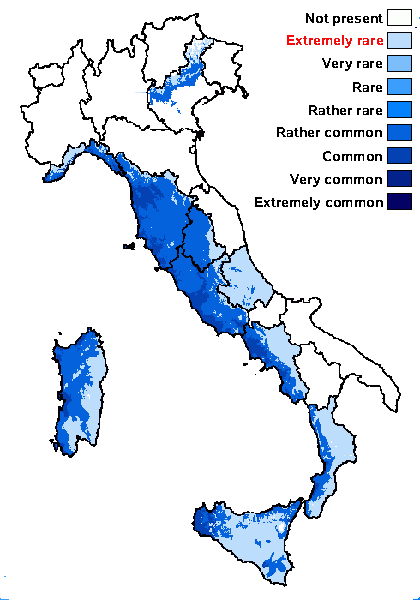
Predictive model
Herbarium samples
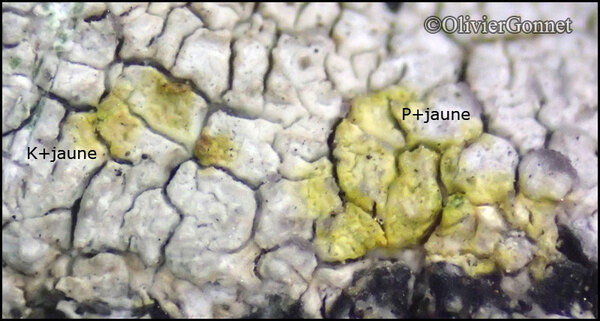
Courtesy Danièle et Olivier Gonnet - Source: https://www.afl-lichenologie.fr/Photos_AFL/Photos_AFL_L/Texte_L_2/Lecanora_gangaleoides.htm
France, Ajaccio, Pointe de la Parata, alt.5 m - Corse
10/10/2018
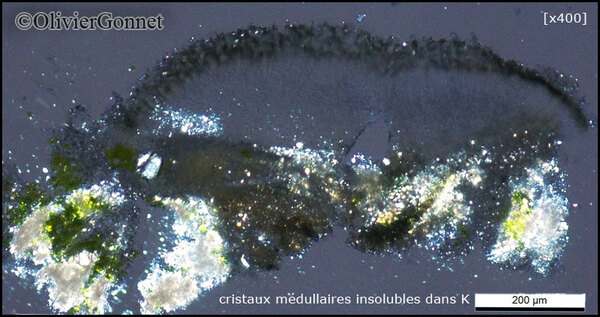
Courtesy Danièle et Olivier Gonnet - Source: https://www.afl-lichenologie.fr/Photos_AFL/Photos_AFL_L/Texte_L_2/Lecanora_gangaleoides.htm
France, Ajaccio, Pointe de la Parata, alt.5 m - Corse
10/10/2018
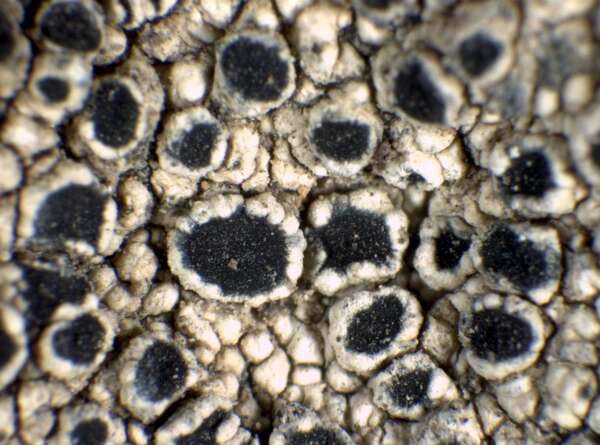

P.L. Nimis; Owner: Department of Life Sciences, University of Trieste
Herbarium: TSB (8658)
2001/11/25

Courtesy Danièle et Olivier Gonnet - Source: https://www.afl-lichenologie.fr/Photos_AFL/Photos_AFL_L/Texte_L_2/Lecanora_gangaleoides.htm
France, Ajaccio, Pointe de la Parata, alt.5 m - Corse
10/10/2018
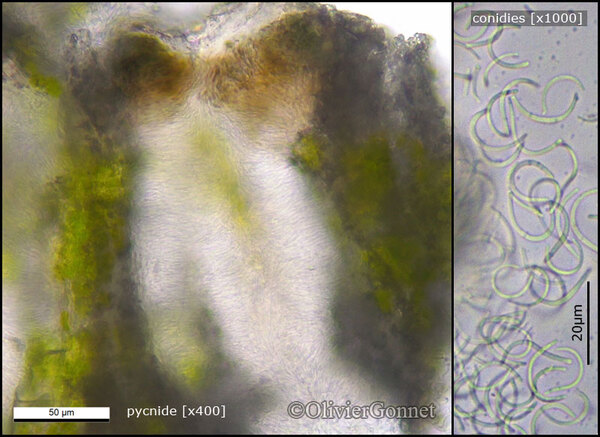
Courtesy Danièle et Olivier Gonnet - Source: https://www.afl-lichenologie.fr/Photos_AFL/Photos_AFL_L/Texte_L_2/Lecanora_gangaleoides.htm
France, Ajaccio, Pointe de la Parata, alt.5 m - Corse
10/10/2018

Courtesy Danièle et Olivier Gonnet - Source: https://www.afl-lichenologie.fr/Photos_AFL/Photos_AFL_L/Texte_L_2/Lecanora_gangaleoides.htm
France, Ajaccio, Pointe de la Parata, alt.5 m - Corse
10/10/2018
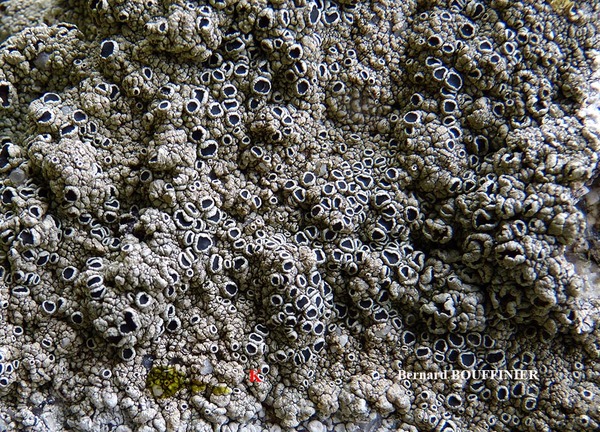
Bernard Bouffinier - Source: http://www.lichensmaritimes.org/index.php?task=fiche&lichen=68&lang=en
France, Cast
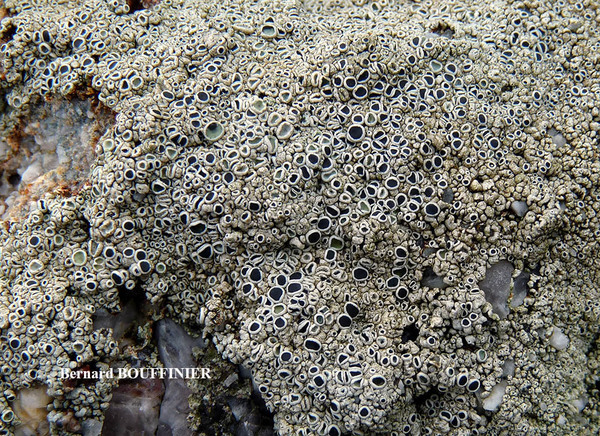
Bernard Bouffinier - Source: http://www.lichensmaritimes.org/index.php?task=fiche&lichen=68&lang=en
France, Cap de la Chèvre

Bernard Bouffinier - Source: http://www.lichensmaritimes.org/index.php?task=fiche&lichen=68&lang=en
France, Coadry
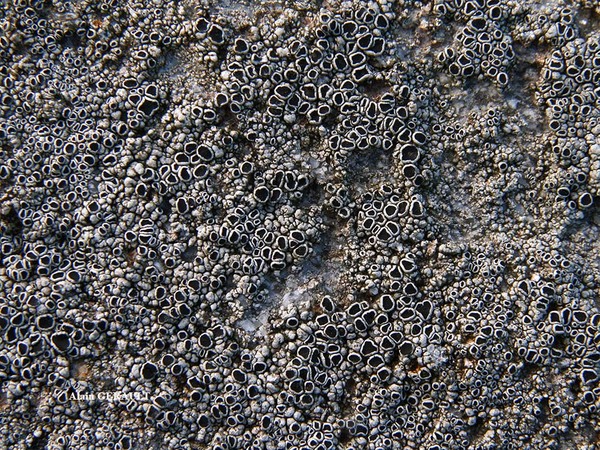
Alain Gerault - Source: http://www.lichensmaritimes.org/index.php?task=fiche&lichen=68&lang=en
France, Raz
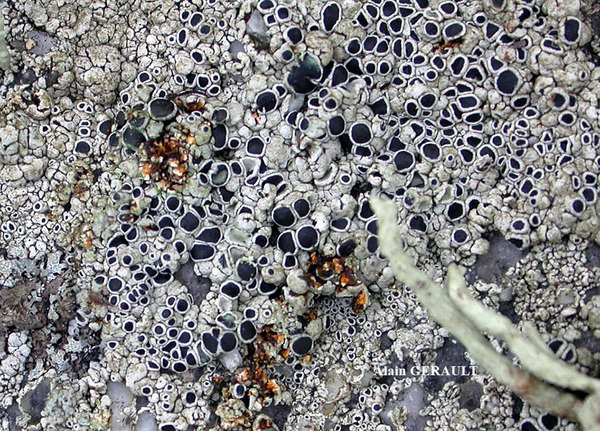
Alain Gerault - Source: http://www.lichensmaritimes.org/index.php?task=fiche&lichen=68&lang=en
France, Argenton
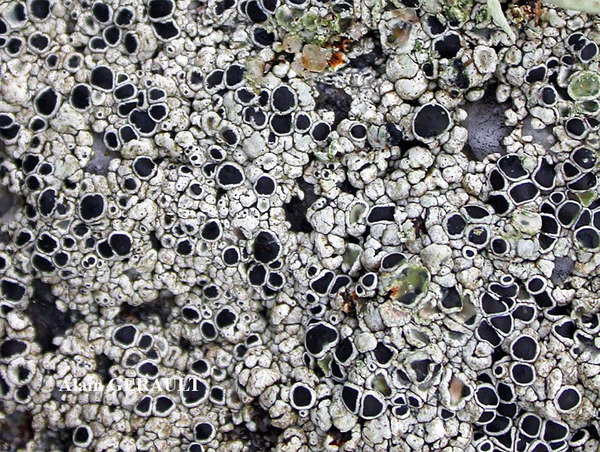
Alain Gerault - Source: http://www.lichensmaritimes.org/index.php?task=fiche&lichen=68&lang=en
France, Argenton
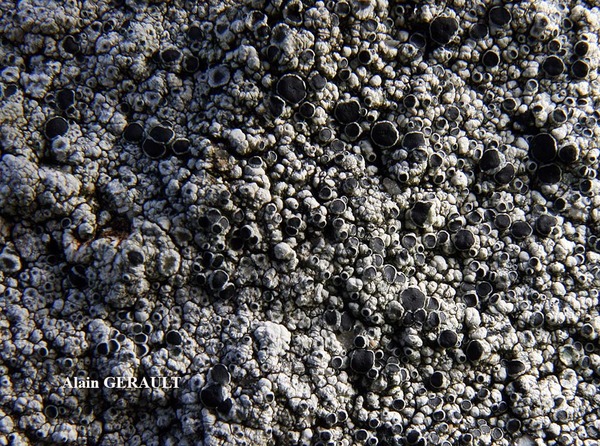
Alain Gerault - Source: http://www.lichensmaritimes.org/index.php?task=fiche&lichen=68&lang=en
France, Le Passage
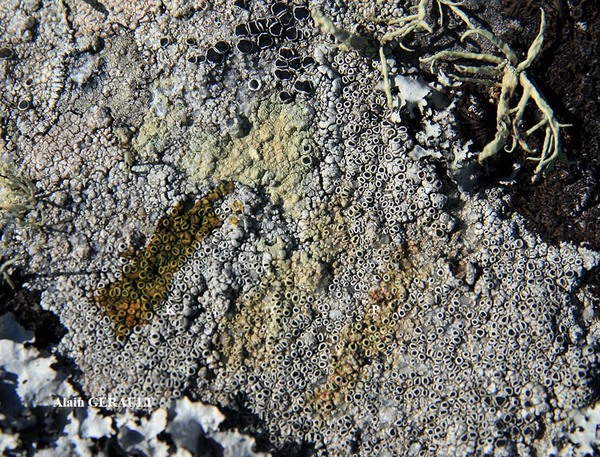
Alain Gerault - Source: http://www.lichensmaritimes.org/index.php?task=fiche&lichen=68&lang=en
France, Raz

Alain Gerault - Source: http://www.lichensmaritimes.org/index.php?task=fiche&lichen=68&lang=en
France, Raz

Jacques Haine - Source: http://www.lichensmaritimes.org/index.php?task=fiche&lichen=68&lang=en
France, Camaret
Growth form: Crustose
Substrata: rocks
Photobiont: green algae other than Trentepohlia
Reproductive strategy: mainly sexual
Most common in areas with a humid-warm climate (e.g. most of Tyrrenian Italy)
In underhangs rarely wetted by rain
Commonnes-rarity: (info)
Alpine belt: absent
Subalpine belt: absent
Oromediterranean belt: absent
Montane belt: extremely rare
Submediterranean belt: extremely rare
Padanian area: absent
Humid submediterranean belt: rather common
Humid mediterranean belt: common
Dry mediterranean belt: extremely rare

Predictive model
| Herbarium samples |

Courtesy Danièle et Olivier Gonnet - Source: https://www.afl-lichenologie.fr/Photos_AFL/Photos_AFL_L/Texte_L_2/Lecanora_gangaleoides.htm
France, Ajaccio, Pointe de la Parata, alt.5 m - Corse
10/10/2018

Courtesy Danièle et Olivier Gonnet - Source: https://www.afl-lichenologie.fr/Photos_AFL/Photos_AFL_L/Texte_L_2/Lecanora_gangaleoides.htm
France, Ajaccio, Pointe de la Parata, alt.5 m - Corse
10/10/2018


P.L. Nimis; Owner: Department of Life Sciences, University of Trieste
Herbarium: TSB (8658)
2001/11/25

Courtesy Danièle et Olivier Gonnet - Source: https://www.afl-lichenologie.fr/Photos_AFL/Photos_AFL_L/Texte_L_2/Lecanora_gangaleoides.htm
France, Ajaccio, Pointe de la Parata, alt.5 m - Corse
10/10/2018

Courtesy Danièle et Olivier Gonnet - Source: https://www.afl-lichenologie.fr/Photos_AFL/Photos_AFL_L/Texte_L_2/Lecanora_gangaleoides.htm
France, Ajaccio, Pointe de la Parata, alt.5 m - Corse
10/10/2018

Courtesy Danièle et Olivier Gonnet - Source: https://www.afl-lichenologie.fr/Photos_AFL/Photos_AFL_L/Texte_L_2/Lecanora_gangaleoides.htm
France, Ajaccio, Pointe de la Parata, alt.5 m - Corse
10/10/2018

Bernard Bouffinier - Source: http://www.lichensmaritimes.org/index.php?task=fiche&lichen=68&lang=en
France, Cast

Bernard Bouffinier - Source: http://www.lichensmaritimes.org/index.php?task=fiche&lichen=68&lang=en
France, Cap de la Chèvre

Bernard Bouffinier - Source: http://www.lichensmaritimes.org/index.php?task=fiche&lichen=68&lang=en
France, Coadry

Alain Gerault - Source: http://www.lichensmaritimes.org/index.php?task=fiche&lichen=68&lang=en
France, Raz

Alain Gerault - Source: http://www.lichensmaritimes.org/index.php?task=fiche&lichen=68&lang=en
France, Argenton

Alain Gerault - Source: http://www.lichensmaritimes.org/index.php?task=fiche&lichen=68&lang=en
France, Argenton

Alain Gerault - Source: http://www.lichensmaritimes.org/index.php?task=fiche&lichen=68&lang=en
France, Le Passage

Alain Gerault - Source: http://www.lichensmaritimes.org/index.php?task=fiche&lichen=68&lang=en
France, Raz

Alain Gerault - Source: http://www.lichensmaritimes.org/index.php?task=fiche&lichen=68&lang=en
France, Raz

 INDEX FUNGORUM
INDEX FUNGORUM
 GBIF
GBIF
 DOLICHENS
DOLICHENS
